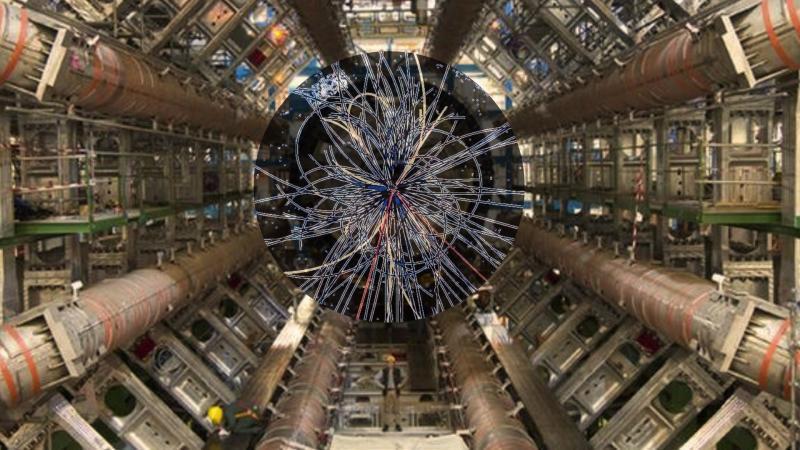
CERN Scientists Shedding Light on Antimatter & Universe’s Origins
The mysteries of the universe have long fascinated humans, and scientists at CERN’s Large Hadron Collider (LHC) are one step closer to unraveling the secrets of antimatter. Recently, the ALICE (A Large Ion Collider Experiment) collaboration confirmed the first evidence of antihyperhelium-4, a significant breakthrough in understanding the fundamental forces of nature. This discovery sheds new light on the balance between matter and antimatter and the early moments of the universe’s existence.
The ALICE collaboration, comprising scientists from over 30 countries, has been studying the interactions between heavy ions at the LHC. By colliding these ions at incredibly high energies, the team has created conditions similar to those present in the universe just after the Big Bang. This allows them to observe the formation of exotic particles, such as antihyperhelium-4, which can provide valuable insights into the fundamental laws of physics.
Antimatter, by its very nature, is a fascinating and elusive subject. When matter and antimatter come into contact, they annihilate each other, releasing vast amounts of energy in the process. This fundamental force has been a subject of study for decades, with scientists seeking to understand why the universe is predominantly composed of matter. The discovery of antihyperhelium-4 is a significant step forward in this endeavor.
So, what exactly is antihyperhelium-4? In simple terms, it is the antiparticle counterpart of hyperhelium-4, a stable isotope of helium. The “anti-” prefix denotes that it has the opposite charge of its matter counterpart. Antihyperhelium-4 is an example of an exotic particle, which is formed under extreme conditions, such as those present in the LHC.
The detection of antihyperhelium-4 was made possible by the ALICE collaboration’s sophisticated detector systems. These detectors are designed to identify and track the particles produced in high-energy collisions. The team used a combination of particle identification techniques, including time-of-flight and momentum measurements, to confirm the presence of the antiparticle.
The significance of this discovery cannot be overstated. Antihyperhelium-4 provides a unique window into the universe’s early moments, when the fundamental forces of nature were still taking shape. By studying this particle, scientists can gain insights into the balance between matter and antimatter, which is essential for understanding the universe’s evolution.
The discovery of antihyperhelium-4 also has implications for our understanding of the fundamental forces of nature. The strong nuclear force, which holds matter together, is a fundamental force that is different from the weak nuclear force, which is responsible for certain types of radioactive decay. The study of antihyperhelium-4 can provide valuable insights into the interplay between these two forces, which is crucial for understanding the behavior of matter at the subatomic level.
The ALICE collaboration’s discovery is a testament to the power of human curiosity and the incredible advancements made in particle physics. The LHC, with its incredible energies and precision detectors, has enabled scientists to recreate conditions similar to those present in the early universe. This has allowed them to study the formation of exotic particles, such as antihyperhelium-4, which can provide valuable insights into the fundamental laws of physics.
In conclusion, the discovery of antihyperhelium-4 by the ALICE collaboration at CERN’s Large Hadron Collider is a significant breakthrough in our understanding of the universe. This exotic particle offers a unique window into the early moments of the universe, when the fundamental forces of nature were still taking shape. The study of antihyperhelium-4 has the potential to shed new light on the balance between matter and antimatter, the fundamental forces of nature, and the evolution of the universe.
Source:
https://researchmatters.in/news/exotic-antimatter-spotted-heavy-ion-collisions-lhc






